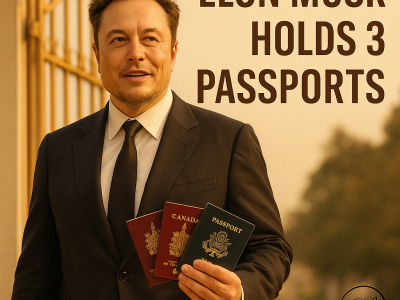When a driver in Paris or Berlin fills their tank, they may assume that European sanctions have blocked Russian crude from reaching their fuel. Yet in reality, the refined diesel flowing into that car may have begun its journey in the Siberian permafrost, crossed the ocean into Indian refineries, and returned quietly to European ports. This paradox illustrates how deeply oil shapes the geopolitical order and how sanctions, commerce, and geology remain inseparably bound.
Russia sits on one of the largest hydrocarbon endowments in the world. India has become its most important buyer and refiner. Europe attempts to cut links yet consumes refined imports indirectly. The United States seeks to pressure both Moscow and New Delhi while preserving global energy stability. To understand this tangled order requires both a geological lens and an eye for political drama.
The deep time origins of russia’s oil
Russia’s oil wealth is not accidental but the product of millions of years of geological processes. The most important is the West Siberian Basin, which spans nearly three million square kilometres. This vast sedimentary depression contains Jurassic and Cretaceous source rocks, most famously the Bazhenov Formation. Rich in organic matter deposited in ancient inland seas, the Bazhenov shales reached the right temperature and pressure window to generate petroleum.
Overlying these source rocks are thick sequences of sandstones and carbonates that act as reservoirs. Traps formed by folding, faulting, and salt structures sealed the hydrocarbons in place. The result is an extraordinary concentration of recoverable oil and gas. Current estimates suggest the West Siberian Basin alone accounts for more than seventy percent of Russia’s total reserves.
Other important regions include the Volga Urals province, where Devonian and Carboniferous limestones contain prolific oil accumulations, and the Timan Pechora Basin in the Russian Arctic, which holds both conventional oil and potential shale resources. Offshore, the Caspian Sea hosts fields such as Filanovsky, containing over a billion barrels, while the Black Sea’s Val Shatsky structure holds more than six billion barrels of estimated reserves.
Arctic frontiers and technological barriers
The greatest untapped potential lies in the Arctic seas. Geological surveys indicate that the Kara Sea, Laptev Sea, and Barents Shelf could contain billions of barrels of undiscovered oil. These regions are frontier provinces, locked beneath thick ice cover for most of the year and requiring specialised drilling platforms and subsea pipelines.
Western majors such as ExxonMobil and Shell once partnered with Russian firms to explore these areas, but sanctions imposed after 2014 and intensified after 2022 halted joint ventures. Without advanced Western drilling technology, Russia faces difficulties in developing Arctic deep water resources. Nonetheless, the reserves remain a strategic card. Climate change is opening longer navigation windows along the Northern Sea Route, making extraction and export more feasible in the long term.
Global context: How Russia compares
Globally, proven oil reserves amount to more than 1.5 trillion barrels. Venezuela sits at the top with around 300 billion barrels, though most are ultra heavy crudes that are expensive to refine. Saudi Arabia follows with about 267 billion barrels of high quality, low sulphur crude concentrated in supergiant fields like Ghawar. Canada’s 170 billion barrels are mostly oil sands, requiring energy intensive upgrading. Iran and Iraq together hold another 300 billion barrels, largely conventional and low cost.
Russia’s proven reserves, around 80 billion barrels, place it in the global top six. However, when technically recoverable resources are counted, Russia rises higher because of its vast shale and tight oil potential. The United States, while holding smaller proven reserves, is currently the largest producer due to its shale revolution. Russia’s advantage lies not only in the sheer volume but in the geographical spread across Siberia, the Far East, the Caspian, and the Arctic.
Crude quality also matters. The Russian export blend known as Urals has a medium density and relatively high sulphur content, making it less desirable than the light sweet crudes of the Middle East. Yet discounts offered under sanction pressure have made it attractive to price sensitive buyers such as India.
Sanctions, price caps, and the shadow fleet
The West’s response to the war in Ukraine has centred on restricting Russia’s oil revenue. The European Union banned most imports of Russian crude and refined products, while the G7 introduced a price cap mechanism. This mechanism allows shipping and insurance services from Western companies only if the oil is sold below a designated threshold. Initially set at sixty dollars per barrel, the cap was lowered to around forty eight dollars in 2025 to track falling global prices.
Russia countered by building a “shadow fleet” of older tankers registered under non Western flags and insured outside European and American markets. These vessels carry crude to Asia, often engaging in ship to ship transfers at sea to obscure origins. The result has been a partial circumvention of sanctions. Russia still sells millions of barrels per day, albeit at discounted prices, while revenue remains significant though reduced compared with pre war levels.
India’s strategic calculus
India has emerged as the largest customer for Russian oil. Before 2022, Russian crude accounted for less than two percent of Indian imports. By 2024, it surpassed forty percent. India’s refineries, particularly those at Jamnagar, are among the most sophisticated globally, capable of processing a wide range of crude grades. This allows them to handle heavier, higher sulphur Russian blends efficiently.
Officials in New Delhi argue that these imports are dictated by national interest. With a population of more than 1.4 billion and rapid economic growth, energy security is paramount. Discounts on Russian oil have saved India billions of dollars, curbing inflation and supporting industrial output. Indian diplomats also stress that Western countries themselves indirectly consume Russian oil through refined product imports.
As Ministry of External Affairs spokesperson Randhir Jaiswal noted: “India began importing from Russia because traditional supplies were diverted to Europe after the outbreak of the conflict. The United States at that time actively encouraged such imports by India for strengthening global energy markets’ stability.”
This position has not silenced criticism. Washington has threatened tariffs on Indian exports and secondary sanctions on entities dealing with Russian energy. Yet markets largely dismiss such threats, betting that American policymakers cannot risk alienating India, a strategic partner in balancing China.
Europe’s uneasy compromise
Europe has drastically reduced direct imports from Russia but continues to consume refined fuels originating from Russian crude. Diesel refined in India or Turkey often makes its way into European markets, blurring the line between sanction compliance and economic reality.
The European Union has attempted to close these loopholes by banning imports of refined products traced to Russian crude. However, tracing molecular origin is technically complex, and enforcement remains uneven. Some member states dependent on cheaper energy have resisted strict measures, forcing compromises and delays.
For ordinary Europeans, the issue appears at the pump in the form of fluctuating diesel prices. Behind each litre lies a web of tankers, refineries, and political negotiations.
China and turkey: Silent enablers
While India attracts headlines, China is actually the single largest buyer of Russian crude. Pipeline links such as the Eastern Siberia Pacific Ocean route deliver oil directly to Chinese refineries. This steady demand provides Moscow with a lifeline.
Turkey plays another role by acting as a hub for blending and re exporting. Russian crude enters Turkish refineries, where it is mixed with other grades. Once refined, products can be legally sold to Europe without violating direct bans. This blending practice has drawn criticism but continues because of Turkey’s pivotal geographic location and political leverage.
Opec plus and the saudi balance
Russia is not only a supplier but a member of OPEC Plus, the alliance of oil producers led by Saudi Arabia. The group coordinates production cuts to stabilise prices. Saudi Arabia finds itself balancing between maintaining cohesion with Russia inside OPEC Plus and preserving its long standing relationship with Washington. Coordinated cuts have often benefited Moscow by keeping prices higher, even as it sells at a discount.
This triangular diplomacy underlines how oil markets remain politically orchestrated rather than purely economic. Decisions in Riyadh or Moscow ripple through New Delhi, Brussels, and Washington.
Domestic politics in the united states
American policy on Russian oil is shaped not only by foreign strategy but also by domestic electoral pressures. Rising petrol prices can cost presidents elections. Thus Washington tolerates some leakage of Russian oil into global markets, preferring reduced Russian profits over outright exclusion that would cause global supply shocks.
The Trump administration has taken a harder rhetorical line, threatening tariffs on Indian goods in response to Russian imports. Yet analysts note that such measures would harm American industries reliant on Indian supply chains. The contradiction illustrates the political theatre surrounding energy sanctions.
Why geology and politics cannot be separated
The story of Russian oil is ultimately a story of geology meeting geopolitics. Without the rich source rocks of West Siberia, the Bazhenov shales, and the untapped Arctic frontier, Moscow would not wield such leverage. Without India’s refining capacity and appetite for discounted imports, these reserves would sit stranded. Without Europe’s demand for diesel, the refined flows would not return westward. Without American political calculation, sanctions would either collapse or escalate into economic warfare.
Every technical detail of reservoir quality, sulphur content, and refining flexibility cascades into global political choices. Every political choice feeds back into exploration, investment, and technological development.
The central question remains: if sanctions cannot fully stop Russian oil from reaching Western pumps, who truly holds the power in this new energy order? Is it the geology beneath Siberia, the refiners in Jamnagar, or the consumers filling their tanks in Paris and Berlin?







